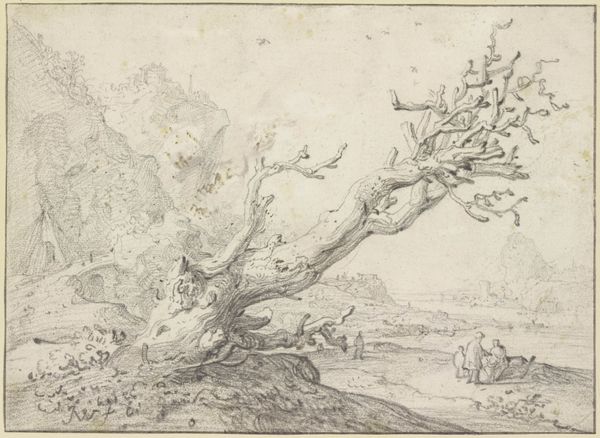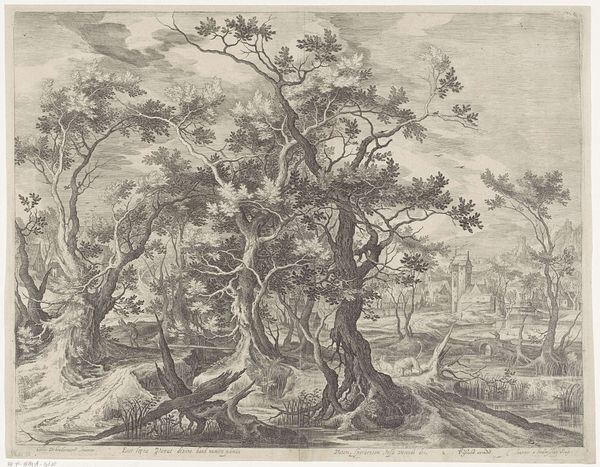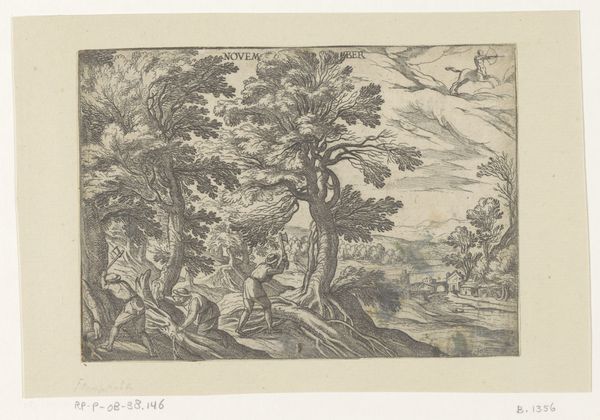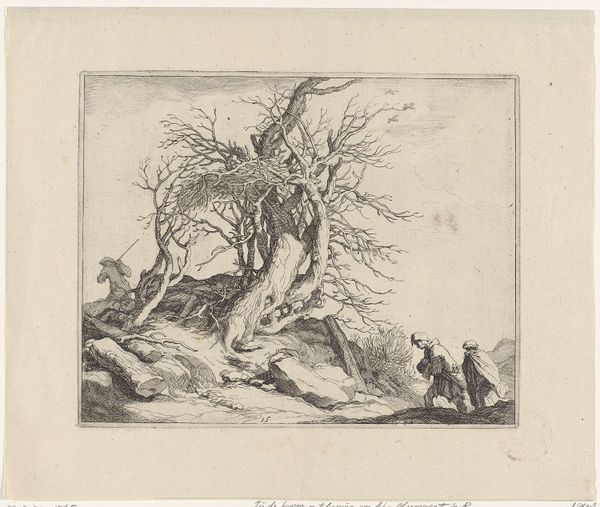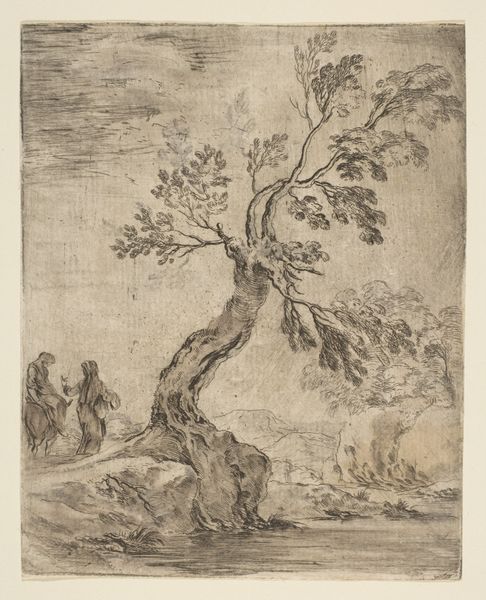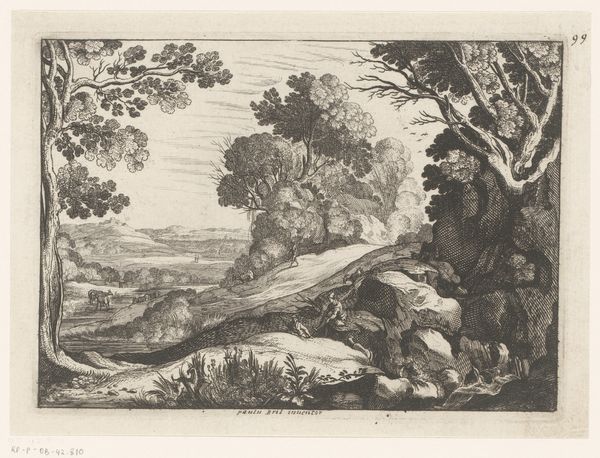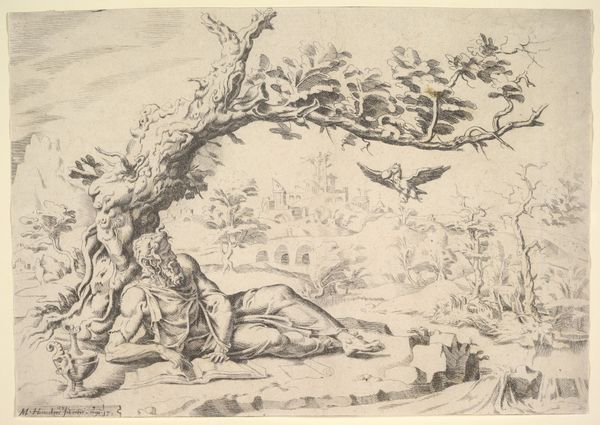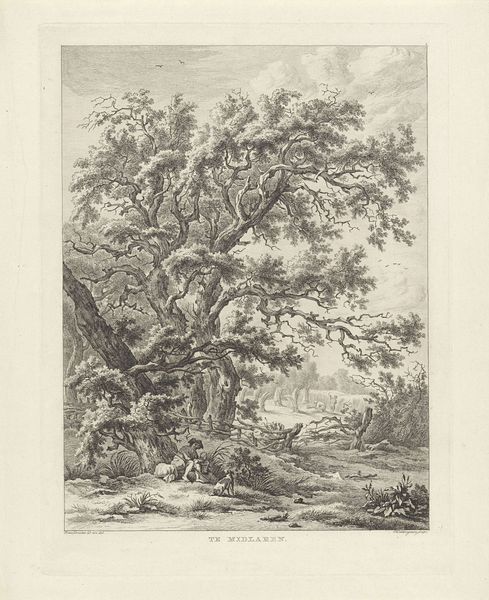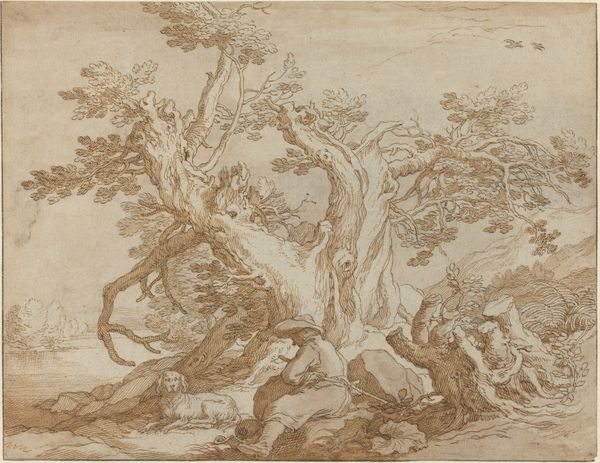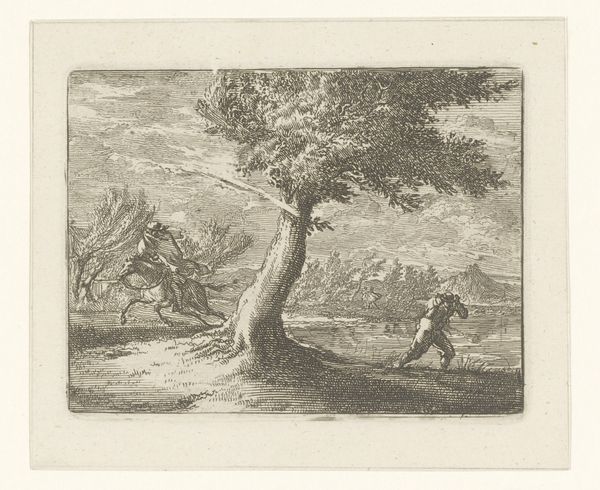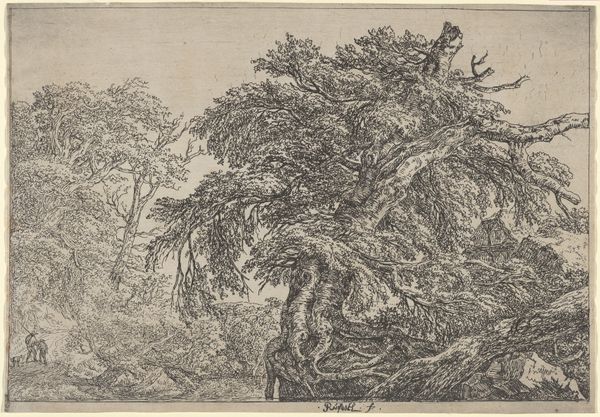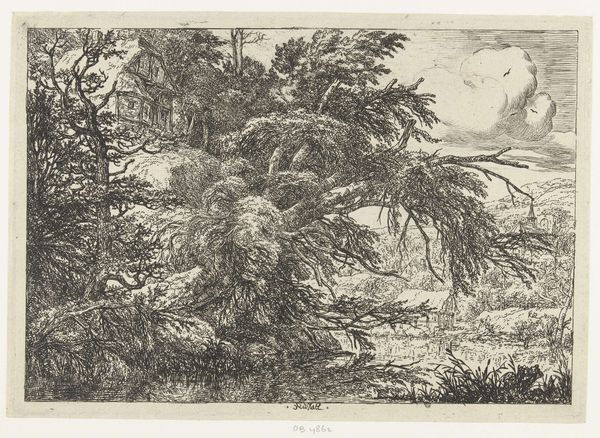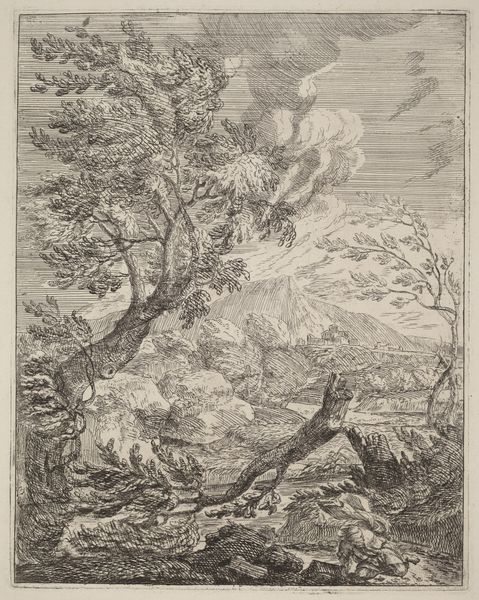
drawing, ink, engraving
#
drawing
#
baroque
#
landscape
#
figuration
#
ink
#
engraving
Dimensions: height 95 mm, width 105 mm
Copyright: Rijks Museum: Open Domain
Frederick Bloemaert made this etching, entitled “Vergezicht met een boom,” or “Landscape with a Tree,” in the Netherlands, sometime in the 17th century. It depicts a traveler with a dog passing by an unusually gnarled tree. This image creates meaning through visual codes, cultural references, and historical associations. Landscape prints like this one were popular at the time as a way to depict and claim dominion over the natural world. The imposing tree could represent the might and endurance of the Dutch people. It might also symbolize a kind of divine order, where humanity and nature coexist in harmony. However, the image may also comment on the social structures of its time, with the traveler representing the working class, passing by the enduring symbol of the wealthy. As an art historian, I use a variety of research resources to better understand the social and institutional contexts of the artwork. This helps me to recognize that the meaning of art is contingent on social and institutional context.
Comments
No comments
Be the first to comment and join the conversation on the ultimate creative platform.
